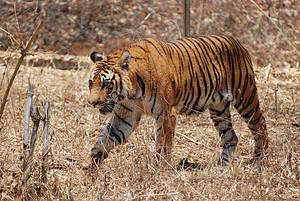Tigers: ferocious, beautiful, endangered. They’re some of the most beloved big cats in the world, but they’re also some of the rarest. Today, fewer than 5,000 tigers survive in the wild, inhabiting just 5% of their historic range. While there is only one species of tiger — Panthera tigris. However, there are nine subspecies of tiger, which we’ll take a closer look at here.
Here’s a preview of the 9 Types of Tiger Subspecies:

1. Bali Tiger (Extinct)

Bali tigers died out sometime during the 1950s
©Hary Atwell / Creative Commons – License
The last Bali tiger in the world died sometime in the 1950s. The subspecies wasn’t officially declared extinct until 2008 though. These tigers lived only on the island of Bali, in Indonesia. Males grew up to 7.7 feet long, and weighed up to 220 pounds. Females grew up to 7 feet long, and weighed up to 175 pounds. These smallish tigers succumbed to habitat loss and overhunting.
2. Sumatran Tiger

Sumatran tigers live on the island of Sumatra
©I, Kevin1243, CC BY-SA 3.0, via Wikimedia Commons – License
The only surviving member of the Sunda island tigers, the Sumatran tiger lives only on the island of Sumatra, in Indonesia. Male Sumatran tigers grow up to 8 feet long and weigh up to 265 pounds. Females grow up to 7 feet long and weigh up to 200 pounds. These tigers prey on several species of deer, wild pigs, porcupines, and monkeys, like macaques. Sumatran tigers are critically endangered; their main threats are poaching and habitat loss due to the palm oil industry.
3. Javan Tiger (Extinct)
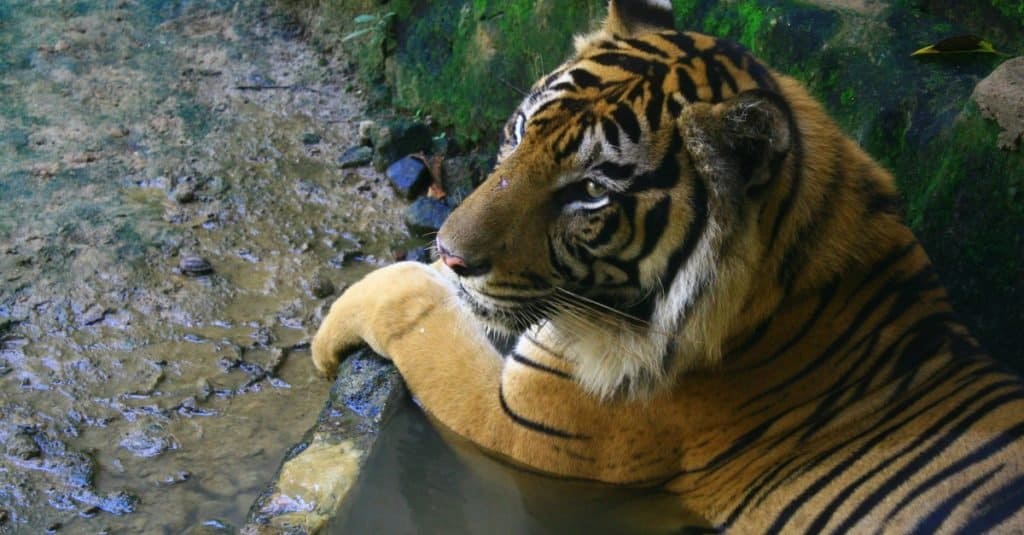
The Javan tiger lived on the Indonesian island of Java until the mid-1970s
©Sigit Adhi Wibowo/Shutterstock.com
This tiger subspecies, endemic only to the island of Java, in Indonesia, became extinct in the 1970s. Male Javan tigers grew up to 8.2 feet long, and weighed up to 315 pounds, with females growing slightly smaller. Humans exterminated Javan tigers through a combination of hunting and habitat destruction. This subspecies was officially declared extinct in 2008.
4. South China Tiger
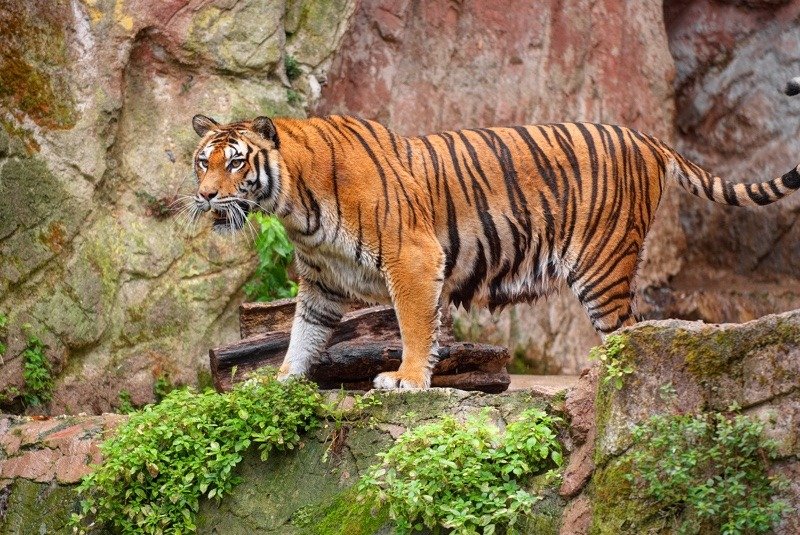
There are less than 100 South China tigers remaining in the world
©Mikhail Leonov/Shutterstock.com
The South China tiger is the smallest of all continental subspecies. Fewer than 100 of these tigers remain in the provinces of Guangdong, Fujian, Hunan, and Jiangxi, in southern China. Male South China tigers grow up to 8.8 feet long and weigh up to 330 pounds. Females grow up to 7.10 feet long and weigh up to 240 pounds. Despite their status as apex predators at the top of the food chain, South China tigers are on the brink of extinction.
5. Indochinese Tiger
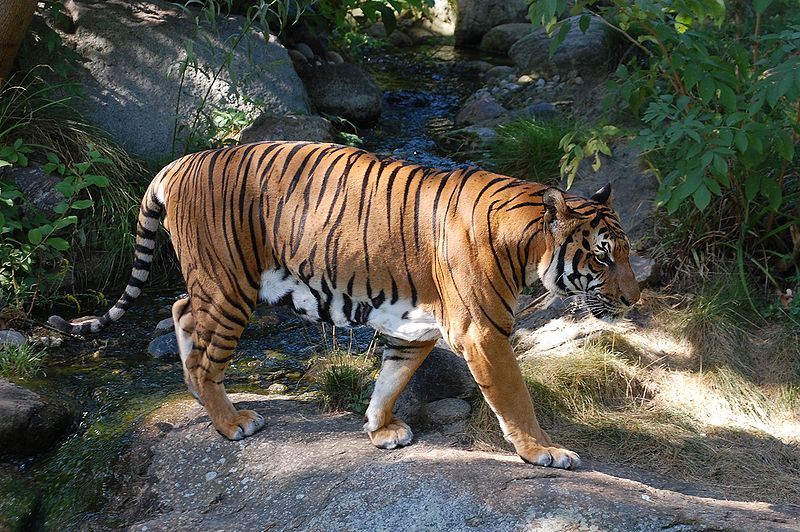
Indochinese tigers are threatened by illegal poaching
This tiger subspecies lives only in Myanmar, Laos, and Thailand. There are thought to be fewer than 500 Indochinese tigers left in the wild. Males grow up to 9.4 feet long and weigh up to 430 pounds. Females grow up to 8.4 feet long and weigh up to 285 pounds. The biggest threat to the Indochinese tiger is illegal poaching, as tiger body parts are in high demand for their use in traditional Chinese medicine.
6. Malayan Tiger
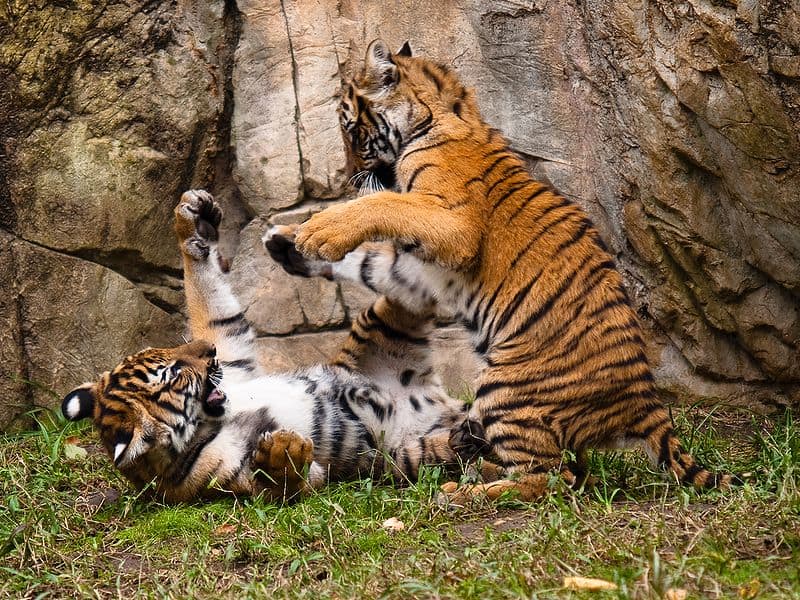
Malayan tigers are critically endangered and there are fewer than 300 of them left in the wild
©Malcolm, CC BY-SA 2.0, via Wikimedia Commons – License
These critically endangered tigers live only on the Malaysian Peninsula. There are thought to be fewer than 300 Malayan tigers left in the wild. Slightly bigger than the Indochinese tiger, Malayan tigers grow up to 9.5 feet long and weigh up to 260 pounds. Their biggest threat comes from habitat loss and fragmentation, largely due to the palm oil industry.
7. Bengal Tiger
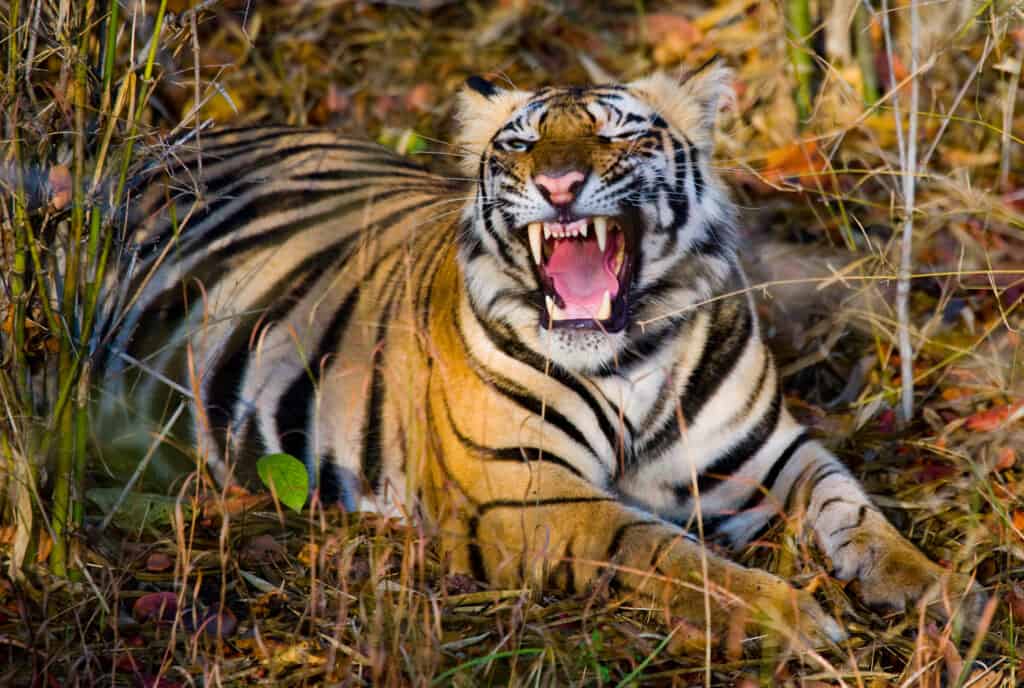
Populations of Bengal tigers have stabilized, although they are still at risk from poaching
©iStock.com/ANDREYGUDKOV
This tiger subspecies is endemic to Bhutan, Nepal, India, Pakistan, and Bangladesh. Male Bengal tigers grow up to 10 feet long and weigh up to 570 pounds. Females grow up to 8.7 feet long and weigh up to 350 pounds. Thanks to conservation efforts in the past two decades, Bengal tiger populations have stabilized in many areas. However, they are still under threat. Their primary threats come from poaching for the illegal wildlife trade, and retributory killings as a result of human/wildlife conflict. The beautiful White tigers are a mutation of the Bengal tiger.
8. Caspian Tiger (Extinct)
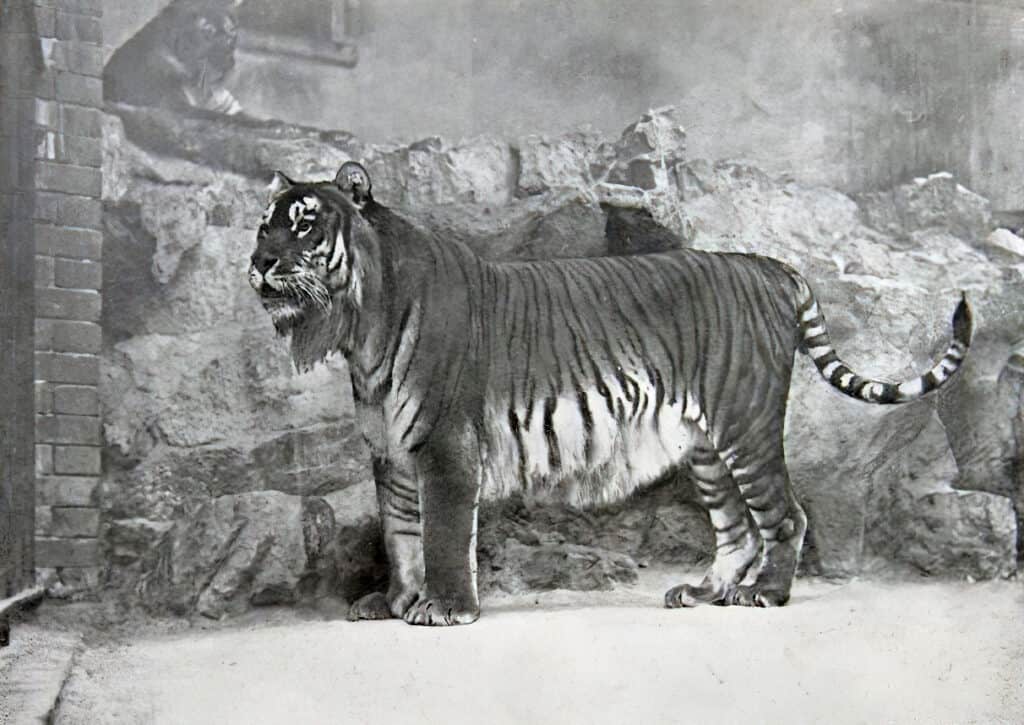
Caspian tigers could reach 10 feet long and weighed as much as 530 pounds
©public domain – License
Once found throughout the riverine valleys of Central Asia and the Middle East, this tiger subspecies went extinct in the 1970s. Caspian tigers succumbed to habitat loss—they specialized in many of the same environments that humans find favorable for agriculture and habitation—and overhunting. Males grew up to 10 feet long, and weighed up to 530 pounds, with females a little smaller. Caspian tigers hunted deer, mountain sheep, and wild pigs.
9. Siberian (Amur) Tiger
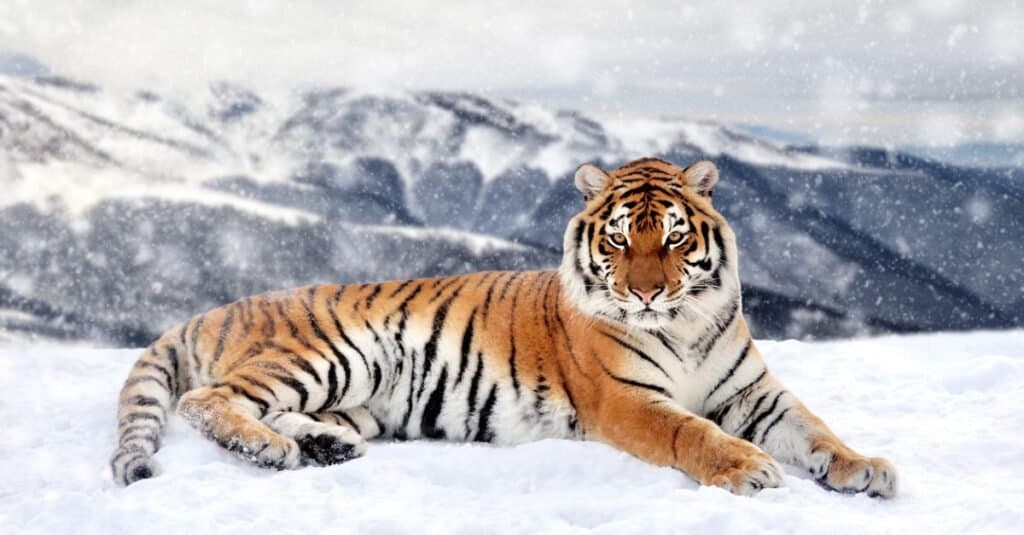
Amur tigers are the largest big cats in the world today
©iStock.com/Byrdyak
Siberian tigers once lived throughout Eastern Russia and Northeast China. Today, they remain only in the Russian Far East. Males of this tiger subspecies are the largest big cats in the world; they grow up to 11 feet long and weigh up to 600 pounds. Females grow up to 9 feet long and weigh up to 370 pounds. Like all tigers, Siberian tigers are obligate carnivores. This means they need nothing other than meat in their diet. Prey species include roe deer, moose, musk deer, hares, wapiti, and even bears.
The main threat to the Siberian tiger’s survival is the demand for tiger body parts, like furs, bones, teeth, and organs. This demand is met through a combination of poaching, and captive breeding of tigers in inhumane tiger farms.
Summary of the 9 Types of Tiger Subspecies from Around the World
| Name of Tiger | Status | Location |
|---|---|---|
| Bali | Extinct | Island of Bali in Indonesia |
| Sumatran | 400-600 left | Island of Sumatra in Indonesia |
| Javan | Extinct | Island of Java in Indonesia |
| South China | Fewer than 100 left | 4 provinces of Southern China |
| Indochinese | Fewer than 500 | Myanmar, Laos, and Thailand |
| Malayan | Fewer than 300 | Malaysian Peninsula |
| Bengal | Stabilized; over 3,000 | Bhutan, Nepal, India, Pakistan, and Bangladesh |
| Caspian | Extinct | Central Asia and Middle East |
| Siberian | About 400 | Far Eastern Russia |
The photo featured at the top of this post is © iStock.com/ANDREYGUDKOV
Sources
- Britannica, Available here: https://www.britannica.com/animal/tiger
- World Wildlife, Available here: https://www.worldwildlife.org/species/tiger
- National Zoo, Available here: https://nationalzoo.si.edu/animals/tiger
- San Diego Zoo, Available here: https://animals.sandiegozoo.org/animals/tiger
- Journals, Available here: https://journals.plos.org/plosone/article?id=10.1371/journal.pone.0207114
Thank you for reading! Have some feedback for us? Contact the AZ Animals editorial team.





